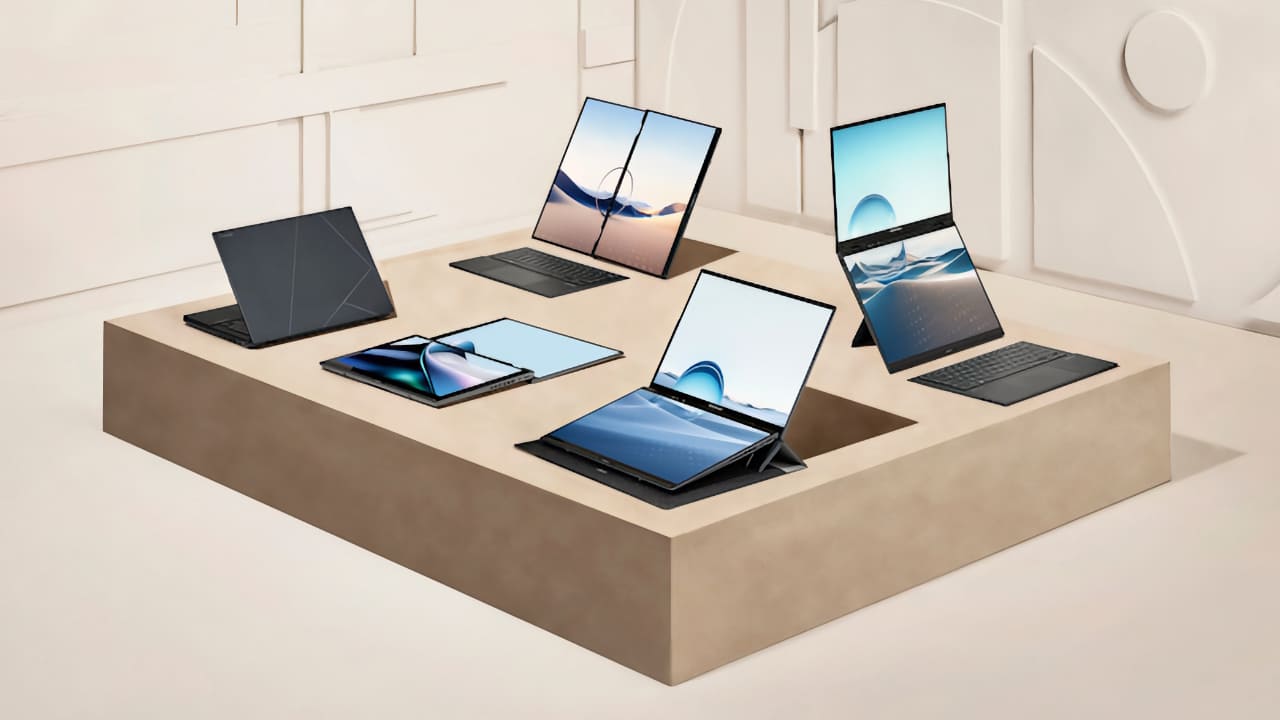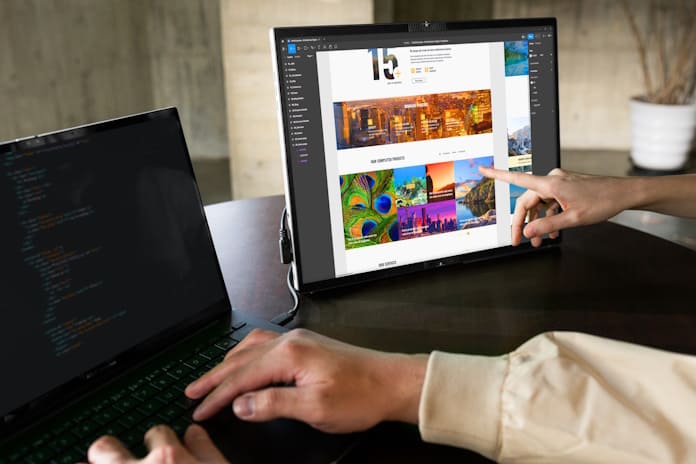
Dual screens, folding screens, and even eyewear have also featured from ASUS during a typically active CES.
We’ve covered some of the ASUS news from CES already, but the company has plenty more where that came from, especially when it comes to innovative ways to deploy screens.
ASUS says that its all-new Zenbook Duo reimagines the dual-screen laptop and, as a hybrid of the original Zenbook Duo and the Zenbook 17 Fold OLED, the company makes a fair point.
Instead of a traditional keyboard deck, the Zenbook Duo has two 14-inch ASUS Lumina OLED touchscreens connected with a high-durability hinge. These can be coupled to a detachable, magnetically coupled keyboard, or you can simply use one of the screens as a virtual keyboard in laptop mode. Each screen offers resolutions up to 2880 x 1800, aspect ratios of 16:10, a peak 550 nit brightness, and a maximum refresh rate of 120Hz. Happily, they support 100% of the DCI-P3 spec.

The system gives you a lot of flexibility in the way you use it. You can open the Zenbook Duo to its full 180° and prop it up in landscape orientation with the integrated kickstand. Pop off the ErgoSense keyboard and set it on your desk in front of the Duo, and you have a workstation that competes with fairly decent desktop setups. In this orientation, you have the equivalent of a 20.5-inch display with a 20:16 aspect ratio, or you can have two separate 14-inch 10:16 displays stacked one on top of the other in portrait orientation.
With the Zenbook Duo fully opened you can also detach the keyboard again and use it as a large tablet with two displays. In any of these modes, you can take advantage of a stylus for drawing, handwriting input, and more.
The laptop’s dual-fan array provides enough cooling power to support up to 32W CPUs, so the machine can host anything up to an Intel Core Ultra 9 processor. Memory and storage specs run up to 32GB of LPDDR5X RAM and up to a 2TB PCIe 4.0 SSD.
For those that just want the second screen without the accompanying computer, there's a now a newfoldable OLED monitor. The ZenScreen Fold OLED MQ17QH folds out to a 17.3-inch screen with a water-drop style hinge. It too covers 100% of the DCI-P3, colour gamut, and offers an extra tall 2560×1920 resolution. ASUS likes to talk about it being the equivalent to two 12.5 inch full HD displays rotated into portrait mode and placed side-by-side.
Fully opened, it's only 9.7 mm thick and the whole unit weighs 1.17 kg.

And finally, for those that want more visual real estate but don't want the physical screens at all, there’s the ASUS AirVision M1 wearable display, a set of AR glasses basically that will provide you with a virtual screen extension.
Full HD resolution Micro OLED displays throw 1100 nits at peak brightness and support 95% of the DCI-P3 colour gamut. One of the impressive things about them is they have a 57° vertical field of view, one which exceeds the natural vertical visual angle of most people (around 55°). Care has also been taken to embed the display so that only the user can see the content on the interfaces.

3 DOF positioning allows users to pin a virtual screen so that it will stay in a particular location relative to the device, and an accompanying app allows users to set up multiple virtual screens and place content on them as they would with multiple physical displays. For each display users can select between landscape and portrait modes and a variety of aspect ratios.

The glasses draw power and accept a display signal through a USB-C port hidden in the frame. No word as yet on pricing, but rumors around the $500 mark seem about right.
Tags: Technology


Comments